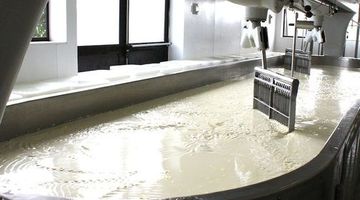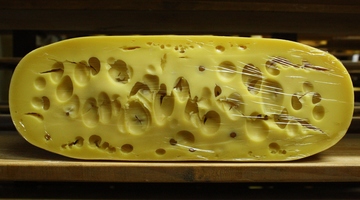The quality and freshness of milk used to make cheese directly correlates to the quality of the final product. Here, Miel Meyer, the General Manager and Cheesemaker at Meyer Gouda Cheese, explains the advantages of using milk direct from the farm to make the cheese.
Questions to consider:
Miel Meyer (Meyer Gouda Cheese
I think the quality of milk is crucial to cheese. As you know, cheese is made 100% out of milk, so the quality of the raw product directly correlates to the end product.
For our cheese in particular, it’s from the farm that we’re located on. We’ve actually got an overhead line which connects us directly to the milk vat where the cows are, so within 3 minutes or 5 minutes after they’ve finished milking the cows, we’re starting to produce that milk into cheese, so you can’t get much fresher than that.
The main advantages of having the local supply of milk is being able to talk about the milk with the farmer. We know where the milk’s coming from, what the cows are being fed. With us, it’s important that we have a natural and traditional cheese product, so we want the cows to be traditionally farmed as well. We need to make sure that there’s not too much supplements being fed, any drugs, that that’s controlled. Anything like that’s all minimal here on the farm. It’s all a natural system, so the cows are on a twice-a-day milking. They are only milking throughout the summer period.



